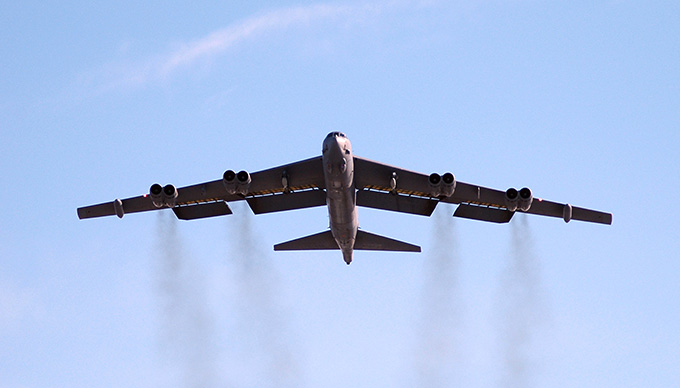A B-52 Stratofortress from the 93rd Bomb Squadron at Barksdale AFB, La., takes off from Eielson AFB, Alaska. Air Force photo by TSgt Jeff Walston.
The Air Force has decided in principle that it will go ahead with re-engining the B-52 bomber force, but is still trying to figure out when, and with what money. “This is one of those things where, we’re trying to fit it all in,” Secretary Heather Wilson said at an ASC17 press conference. “We’re in the midst of bomber tradeoffs,” she said in reference to building the next five-year plan.
The Air Force has already invested heavily in modernizing the B-52 and “we know we’re going to have to re-engine it for the longer term,” Wilson said. Keeping the B-52 makes sense because it “is able to do everything from [dropping] leaflets to nuclear deterrence.” She called it “an amazing piece of equipment,” that is doing things never imagined by its designers—such as dropping ordnance “danger close” to troops on the ground—and it “will probably be in our arsenal for a fair amount of time to come.”
She said the service is starting to “get into the window” where it needs to make a decision about re-engining. Global Strike Command chief Gen. Robin Rand, in a separate press conference, said, “I’ve been a proponent of B-52 re-engining since the day I took command of Global Strike Command.” He has previously said re-engining could potentially pay for itself through reduced fuel usage and reduced maintenance, while providing a big boost in range or loiter time.
“Now, the details are, where do we find the money, because it will compete against a lot of other areas,” Rand said, but “we have every reason to believe that we will fly the BUFF long enough that we’ll get our money’s worth.”
Rand also said AFGSC has decided to do a service life extension program on the B-1B bomber’s engines, but not a replacement.

